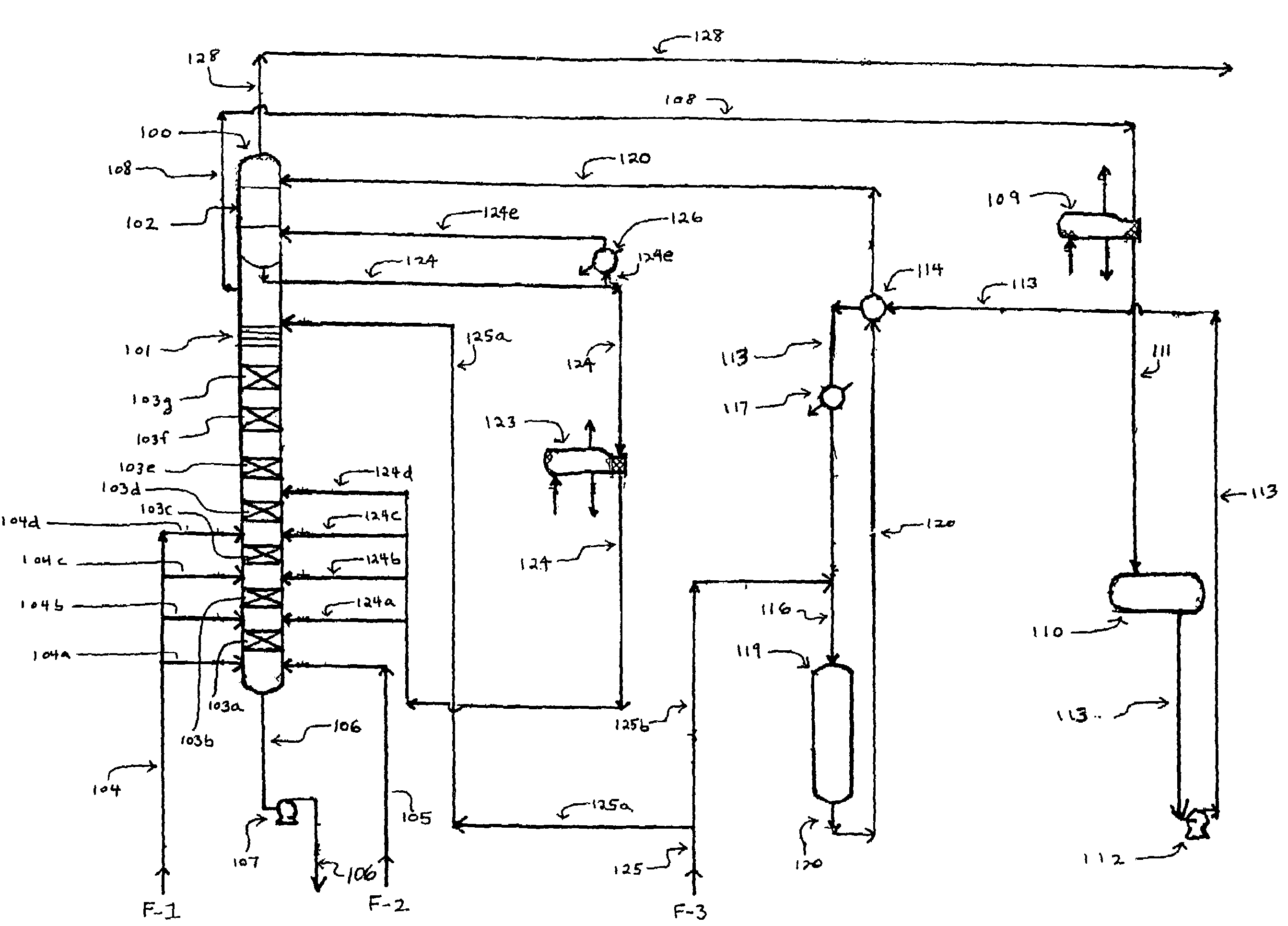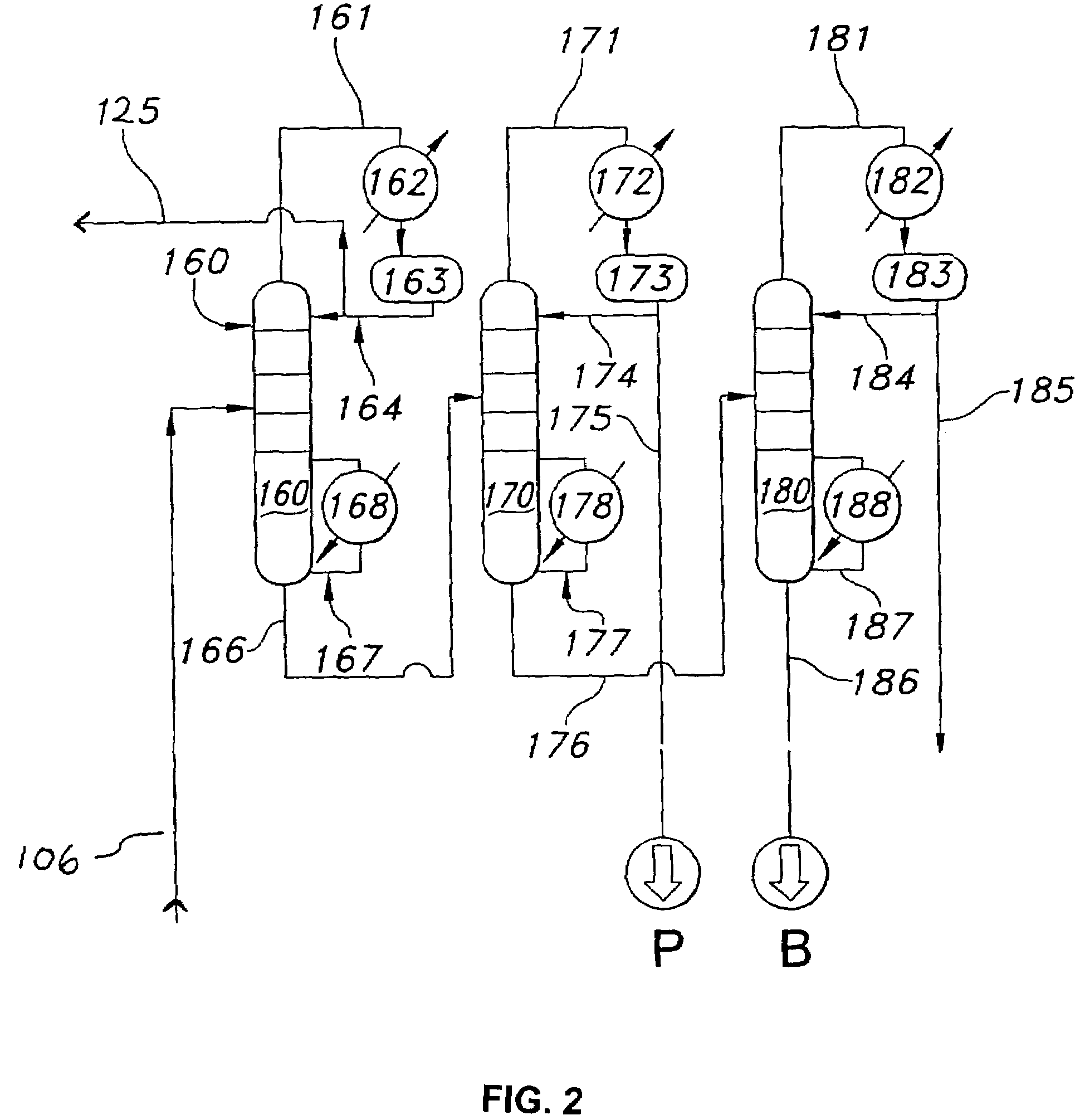Alkylation process for increased conversion and reduced catalyst use
a technology of catalytic distillation and alkylation process, which is applied in the direction of distillation, sustainable manufacturing/processing, and separation processes, can solve the problems of inability to complete the conversion of olefin and aromatic reactants, process is known to suffer from lack of reaction efficiency, and impedance of olefin conversion, so as to improve reduce the productivity of the catalyst bed. , the effect of increasing the number of reaction stages
- Summary
- Abstract
- Description
- Claims
- Application Information
AI Technical Summary
Benefits of technology
Problems solved by technology
Method used
Image
Examples
Embodiment Construction
[0058]As used herein, the term “aromatic” includes non-alkyl group-containing aromatic compounds, such as benzene and naphthalene, as well as alkyl-containing aromatic compounds, such as toluene, xylene, and the like. The term “alkylated aromatic” refers to compounds to which one or more additional alkyl groups are attached by the aromatic alkylation process described below.
[0059]Referring to FIG. 1, the process of the invention requires an alkylation unit corresponding to element 100, as shown. In the alkylation unit, one or more olefin compounds and one or more aromatic compounds are introduced into at least two (i.e., first and second) vertically spaced catalytic reaction zones under alkylation reaction conditions, wherein the second catalytic reaction zone is positioned above the first catalytic reaction zone. During operation of the alkylation unit, the olefin and aromatic compounds react on contact with the catalyst in each of the reaction zones to produce one or more alkylate...
PUM
| Property | Measurement | Unit |
|---|---|---|
| temperature | aaaaa | aaaaa |
| pressure | aaaaa | aaaaa |
| weight ratio | aaaaa | aaaaa |
Abstract
Description
Claims
Application Information
 Login to View More
Login to View More - R&D
- Intellectual Property
- Life Sciences
- Materials
- Tech Scout
- Unparalleled Data Quality
- Higher Quality Content
- 60% Fewer Hallucinations
Browse by: Latest US Patents, China's latest patents, Technical Efficacy Thesaurus, Application Domain, Technology Topic, Popular Technical Reports.
© 2025 PatSnap. All rights reserved.Legal|Privacy policy|Modern Slavery Act Transparency Statement|Sitemap|About US| Contact US: help@patsnap.com



